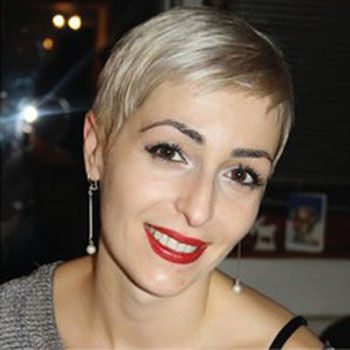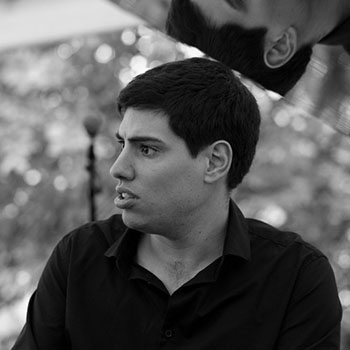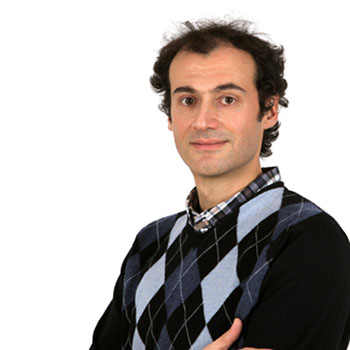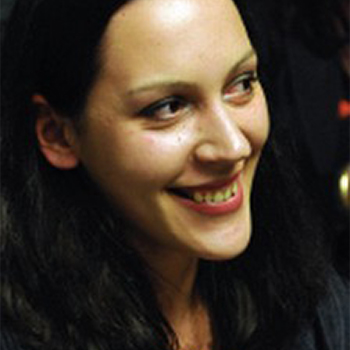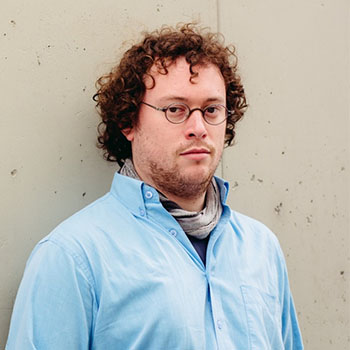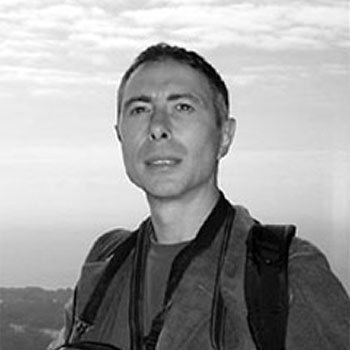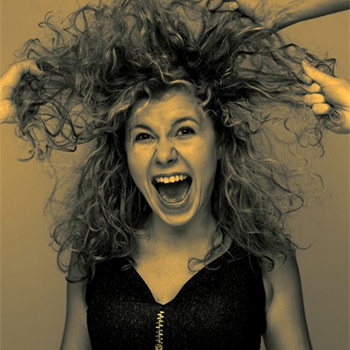Edition IV
Artistic Theme

Man & Music
Proposed by Wratislavia Cantans
Wroclaw, Poland.
Compositions for A Capella chamber choir: soprano, alto, tenor, bass.
12 elements for the 4 major voices
Mankind and music have always been interrelated. Basic human experiences, which are universal for all nations, stimulate the creation of various pieces. It applies both to works written by great composers and to melodies or songs that are the product of folk culture. The idea behind this project is to present every kind of work that refers to the most important moments and stages in human life.
The project includes two types of undertakings: artistic events that feature music pieces which were created as a result of composer’s inspirations from some specific experiences, as well as educational workshops which are aimed at exchanging music heritage of different societies (traditional music) in an international circle.
In the first part we deal with works influenced by composer’s strong experiences inspired by universal events: death, birth, initiation, misfortune, tragedy, war, victory, wedding. We will present more or less abstract musical pictures created at present or in the past, for instance:
Gustav Mahler Kinder Totenlieder, Joseph Haydn The Creation, Hanna Kulenty Cradle Song, Tadeusz Baird Concerto lugubre, Benjamin Britten War Requiem, Krzysztof Penderecki To the Victims of Hiroshima, Arnold Schönberg A Survivor from Warsaw, Dmitri Shostakovich Symphony no.13 ‘Babiy Yar’, Witold Lutosławski Grave. Metamorphoses for cello and piano, Epitaph, Musique funèbre, Cycle Hommage a Lutosławski: Iannis Xenakis Mnamas Xapin, Osvaldas BalakauskasMeridionale – hommega a Witold Lutosławski, Gyorgy Kurtag Un brin de bruyere a Witold, Arne Nirdhaim Adieu, Edison Denisov Postludium In Memoriam Witold Lutosławski, Magnus Lindberg Aura in memoriam Witold Lutosławski David Finko The Holocaust, David Diamond Elegy in Memory of Ravel, Henryk Mikołaj Górecki Symphony of Sorrowful Songsand various masses and funeral pieces, works inspired by all kinds of experiences.
The second part’s assumption is to present and explore works typical of a given country, given society. Introducing different countries to other nation’s folk art heritage will result in cultural exchange which will be extremely enriching for all recipients – participants coming from particular countries.
During the educational workshops, Poland will present works related to child’s birth, that is pieces written for children: lullabies and songs sung to children, starting with their prenatal up to kindergarten period. Such works play an extremely important role in the education and development of a child, and promote learning to speak, learning music, and familiarise children with culture.
Composers
The Musicians

Coro Costanzo Porta
http://www.costanzoporta.it/coro/
Costanzo Porta Choir was founded by Antonio Greco in 1993. The choir won several prizes in national and international competitions and it performed for many important festivals and musical institutions, such as the Festival dei due Mondi of Spoleto, the Ravenna Festival, the Festival Monteverdi in Cremona, the Maggio Musicale Fiorentino, Musica e poesia a San Maurizio in Milan, the Festival Pergolesi/Spontini of Jesi, the Istituzione Universitaria dei Concerti for the La Sapienza University of Rome, the Pavia University, the Associazione Scarlatti of Naples, the Emilia Romagna Festival, and the Anima Mundi Festival of Pisa. The choir also performed in a number of historical theaters, including the Ponchielli in Cremona, Fraschini in Pavia, Nuovo in Udine, Piccini in Bari, Valli in Reggio Emilia, Comunale in Ferrara, Alighieri in Ravenna, Sociale in Como, Grande in Brescia. The Costanzo Porta has played with many instrumental formations; the choir took part in the production of the Orfeo (2003/04), the Il ritorno di Ulisse in patria (2004/05) and the Vespro della Beata Vergine (2005) by Monteverdi, and of the Dixit Dominus by Händel (2009) with the Accademia Bizantina directed by Ottavio Dantone; with the Virtuosi italiani, it performed the Johannes-Passion by Bach under the direction of Michael Radulescu (2000); with the Orchestra Barocca di Venezia and Andrea Marcon, the choir performed in the productions of Andromeda Liberata by Vivaldi (2006) and the Orfeo by Monteverdi (2007) with the theatrical direction of Andrea Cigni; with the Ensemble Elyma of Gabriel Garridoit performed La Dafne by Marco da Gagliano (2007), with the theatrical direction of Davide Livermore; with the Ensemble La Risonanza and Fabio Bonizzoni it sang again the Monteverdi’s Vespro della Beata Vergine (2008); The Costanzo Porta Choir also played with the Orchestra Cantelli of Milan, with the Ensemble Dolce & Tempesta, with the Orquestra Juvenil de la Universidad Nacional de Tucumán (2009), and with the renowned Tallis Scholars of Peter Phillips (2011- 2012).
Pro Arte Nova
The Walloon choir Pro Arte Nova was born, especially for the MusMA experience, in 2013 of the womb of the Festival of Wallonia with young and talented musicians. Denis Menier, takes everything under his wing.
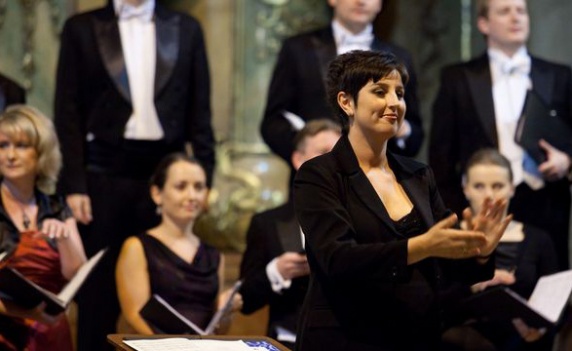
Wroclaw Philharmonic Choir
http://www.nfm.wroclaw.pl/en/ensembles/nfm-choir
The NFM Choir was founded in 2006 by Andrzej Kosendiak and since its inception functions under the directorship of Agnieszka Frankow-Żelazny. In a short space of time it has established itself as one of Poland’s leading choral ensembles, thanks to its rich and varied repertoire, which includes works from the Renaissance to the contemporary, and a cappella to vocal-instrumental in the form of oratorio, opera, and the symphony. It has collaborated with such distinguished conductors as Paul McCreesh, Giovanni Antonini, Jacek Kaspszyk, Krzysztof Penderecki, James MacMillan, Bob Chilcott and Jan Łukaszewski.
SoloVoices Ensemble Basel
http://www.solovoices.ch/
In 2007, the foundation of professional Ensembles SoloVoices, specializes in contemporary music for vocal ensemble, with some partly scenic projects.
Atelier

“A composer finds sounds and uses them. He does not invent them” (Riccardo Piacentini)
“We have to find a uniformity in writing for contemporary music, a notation common to everyone” (Viola, singer Coro Costanzo Porta)
“You have to understand that there are limitations to what we can do” (NFM choir member)
“As soon as a common notation exists for it, a sound is no longer new” (Darija Andovska)
8th & 9th JUNE 2013, Wroclaw, Poland
More than ever before, the MusMA atelier 2013, hosted by Festival Wratislavia Cantans in the beautiful city of Wroclaw, has proven its use to its participants.
In 7 intense sessions, our young MusMA composers were confronted with the interpretation of their works by the talented singers of the Wroclaw Philharmonic Choir and their principal conductor Agnieszka Franków-Zelazny, ing which the new pieces where all thoroughly dissected in terms of inspiration, structure, musicality, emotions, comprehension of notation, sound and meaning.
After a warm welcome hosted by Maestro Andrzej Kosendiak (director Wratislavia Cantans) the previous evening, local MusMA coordinator Piotr Turkiewicz opened the atelier on Friday morning with a brief introduction of the moderator Paul Preusser, guitarist and composer himself. A devoted Paul had enthusiastically prepared for his assignment by getting in touch with the composers weeks before and studying the scores in detail.
Why is Agata Zubel’s piece a Lullaby when it contains so many crescendi? What are the emotions behind the special effects Darija Andovska has integrated in her Aporia Apeiron and is this not rather a piece for 16 voices because of the difficulties the singers have when they have to combine these percussion movements with their singing? How can voices be spared better by entering more chaos in the performance of Ana Gnjatovic’ Balance Lost ? How can Franck Bovet’s Yggdrasil sound more flowing without it losing the intended contrasts (runes <-> spring of water). Yigit Aydin’s Friends of God, clearly capturing his sense of humour, raised the question about his own relationship to God and how it is translated in his piece.
During Ana Gnjatovic’ workshop at about 12 am, MusMA went live on Serbian Radio (RTS), the very loyal associated partner of the Serbian Belgrade Music Festival, who has never missed a MusMA atelier.
At the end of day one, the participants were treated to a recapitulative of last year’s MusMA piece for percussion at the Wroclaw Philharmonic Hall, where former MusMA composer for Wratislavia Cantans Dobromiła Jaskot was the honorary guest for the performance of her Himah, and also Mateusz Ryczek , MusMA composer in2011, joined a fascinated public.
The second day, the choir and Agnieszka worked with Frederik Neyrinck on his rather dark Quasi Palindrom II, inspired by elements at a war cemetery in Flanders Fields after which – the contrast could not be bigger- a very warm and talkative Riccardo Piacentini explained his use of foto-suoni and gratefully accepted the choirs input on his hymn to the universe of happiness Così parlò Beatrice.
The voice is clearly the most powerful and complex of instruments, which even the impressive range of percussion instruments used in 2012, some of which self-made, cannot compete with. The emotions that need to be called upon by the artist and conductor, and which are reflected by the sound they produce, are more real than with any other instruments. This atelier has clearly shown the composer should be aware of this in his/her notation and extensive programme notes with both information about emotions and clear guidelines for notation are a necessity to the performer.
After the 7 workshops, a panel discussion was held looking back on the sessions. The views of the composer and the performer both received equal attention. The main subject was how to go about writing new music for voice, what to consider when writing compositions with new sounds for which no notation exists in order to make it possible for the artist to perform. Agata Zubel, a soprano herself, can see things from both sides and was a valuable participant in the discussion. When a score is not clear, the artist will be less willing to perform the piece so a composer should do his best to deliver an understandable score. On the other hand, a musician might need to put some work in to learning the guidelines to a difficult score and see it as a challenge. For new sounds it is highly recommended to attach some recordings to the scores. Yigit Aydin sent recordings to the choir 2 weeks before the atelier and this paid off with an immaculate performance at the end of his workshop. Riccardo Piacentini made the remark composers can choose to write “not so very clear” and leave the performance at liberty of the artist. Most of the participants conclude that the challenge is in finding uniformity in writing contemporary music!
Advice to the composers: deliver something that looks good!
The afternoon of day 2 was devoted to rehearsals of choir and composers for the evening concert at the beautiful Ossolineum, while festival directors discussed future activities and expansion of this wonderful project. The MusMA concert “Man and Music”, held on Saturday night by the Wroclaw Philharmonic Choir for a full hall with an interested audience, was a success. It was recorded and broadcasted by the Polish National Radio and can be obtained via the European Broadcasting Union.
“A composer finds sounds and uses them. He does not invent them” (Riccardo Piacentini)
“We have to find a uniformity in writing for contemporary music, a notation common to everyone” (Viola, singer Coro Costanzo Porta)
“You have to understand that there are limitations to what we can do” (NFM choir member)
“As soon as a common notation exists for it, a sound is no longer new” (Darija Andovska)
8th & 9th JUNE 2013, Wroclaw, Poland
More than ever before, the MusMA atelier 2013, hosted by Festival Wratislavia Cantans in the beautiful city of Wroclaw, has proven its use to its participants.
In 7 intense sessions, our young MusMA composers were confronted with the interpretation of their works by the talented singers of the Wroclaw Philharmonic Choir and their principal conductor Agnieszka Franków-Zelazny, ing which the new pieces where all thoroughly dissected in terms of inspiration, structure, musicality, emotions, comprehension of notation, sound and meaning.
After a warm welcome hosted by Maestro Andrzej Kosendiak (director Wratislavia Cantans) the previous evening, local MusMA coordinator Piotr Turkiewicz opened the atelier on Friday morning with a brief introduction of the moderator Paul Preusser, guitarist and composer himself. A devoted Paul had enthusiastically prepared for his assignment by getting in touch with the composers weeks before and studying the scores in detail.
Why is Agata Zubel’s piece a Lullaby when it contains so many crescendi? What are the emotions behind the special effects Darija Andovska has integrated in her Aporia Apeiron and is this not rather a piece for 16 voices because of the difficulties the singers have when they have to combine these percussion movements with their singing? How can voices be spared better by entering more chaos in the performance of Ana Gnjatovic’ Balance Lost ? How can Franck Bovet’s Yggdrasil sound more flowing without it losing the intended contrasts (runes <-> spring of water). Yigit Aydin’s Friends of God, clearly capturing his sense of humour, raised the question about his own relationship to God and how it is translated in his piece.
During Ana Gnjatovic’ workshop at about 12 am, MusMA went live on Serbian Radio (RTS), the very loyal associated partner of the Serbian Belgrade Music Festival, who has never missed a MusMA atelier.
At the end of day one, the participants were treated to a recapitulative of last year’s MusMA piece for percussion at the Wroclaw Philharmonic Hall, where former MusMA composer for Wratislavia Cantans Dobromiła Jaskot was the honorary guest for the performance of her Himah, and also Mateusz Ryczek , MusMA composer in2011, joined a fascinated public.
The second day, the choir and Agnieszka worked with Frederik Neyrinck on his rather dark Quasi Palindrom II, inspired by elements at a war cemetery in Flanders Fields after which – the contrast could not be bigger- a very warm and talkative Riccardo Piacentini explained his use of foto-suoni and gratefully accepted the choirs input on his hymn to the universe of happiness Così parlò Beatrice.
The voice is clearly the most powerful and complex of instruments, which even the impressive range of percussion instruments used in 2012, some of which self-made, cannot compete with. The emotions that need to be called upon by the artist and conductor, and which are reflected by the sound they produce, are more real than with any other instruments. This atelier has clearly shown the composer should be aware of this in his/her notation and extensive programme notes with both information about emotions and clear guidelines for notation are a necessity to the performer.
After the 7 workshops, a panel discussion was held looking back on the sessions. The views of the composer and the performer both received equal attention. The main subject was how to go about writing new music for voice, what to consider when writing compositions with new sounds for which no notation exists in order to make it possible for the artist to perform. Agata Zubel, a soprano herself, can see things from both sides and was a valuable participant in the discussion. When a score is not clear, the artist will be less willing to perform the piece so a composer should do his best to deliver an understandable score. On the other hand, a musician might need to put some work in to learning the guidelines to a difficult score and see it as a challenge. For new sounds it is highly recommended to attach some recordings to the scores. Yigit Aydin sent recordings to the choir 2 weeks before the atelier and this paid off with an immaculate performance at the end of his workshop. Riccardo Piacentini made the remark composers can choose to write “not so very clear” and leave the performance at liberty of the artist. Most of the participants conclude that the challenge is in finding uniformity in writing contemporary music!
Advice to the composers: deliver something that looks good!
The afternoon of day 2 was devoted to rehearsals of choir and composers for the evening concert at the beautiful Ossolineum, while festival directors discussed future activities and expansion of this wonderful project. The MusMA concert “Man and Music”, held on Saturday night by the Wroclaw Philharmonic Choir for a full hall with an interested audience, was a success. It was recorded and broadcasted by the Polish National Radio and can be obtained via the European Broadcasting Union.
Gallery



















